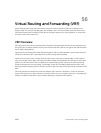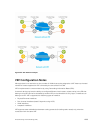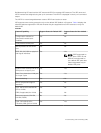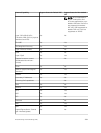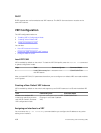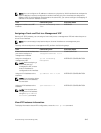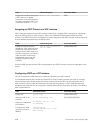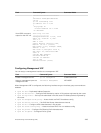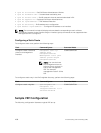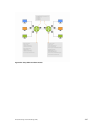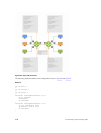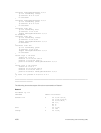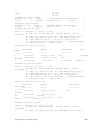
Task Command Syntax Command Mode
Display the interfaces assigned to
a VRF instance. To display
information on all VRF instances
(including the default VRF 0), do
not enter a value for
vrf-name.
show ip vrf [
vrf-name]
EXEC
Assigning an OSPF Process to a VRF Instance
OSPF routes are supported on all VRF instances. Refer to for complete OSPF configuration information.
Assign an OSPF process to a VRF instance . Return to CONFIGURATION mode to enable the OSPF
process. The OSPF Process ID is the identifying number assigned to the OSPF process, and the Router ID
is the IP address associated with the OSPF process.
Task Command Syntax Command Mode
Enable the OSPFv2 process
globally for a VRF instance. Enter
the VRF key word and instance
name to tie the OSPF instance to
the VRF. All network commands
under this OSPF instance are
subsequently tied to the VRF
instance.
process-id range:
0-65535
router ospf
process-id
vrf vrf name
CONFIGURATION
Once the OSPF process and the VRF are tied together, the OSPF Process ID cannot be used again in the
system.
Configuring VRRP on a VRF Instance
You can configure the VRRP feature on interfaces that belong to a VRF instance.
In a virtualized network that consists of multiple VRFs, various overlay networks can exist on a shared
physical infrastructure. Nodes (hosts and servers) that are part of the VRFs can be configured with IP
static routes for reaching specific destinations through a given gateway in a VRF. VRRP provides high
availability and protection for next-hop static routes by eliminating a single point of failure in the default
static routed network. .
Task Command Syntax Command Mode
Create VRF
ip vrf vrf1
CONFIGURATION
Assign the VRF to an
interface
ip vrf forwarding vrf1
VRF CONFIGURATION
Assign an IP address to
the interface
ip address 10.1.1.1 /24
no shutdown
Configure the VRRP
group and virtual IP
address
vrrp-group 10
virtual-address 10.1.1.100
show config
1014
Virtual Routing and Forwarding (VRF)





